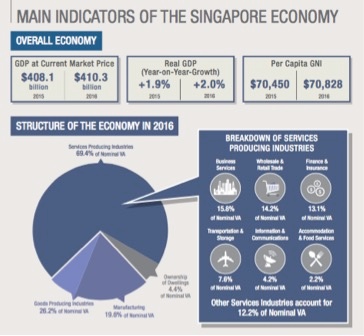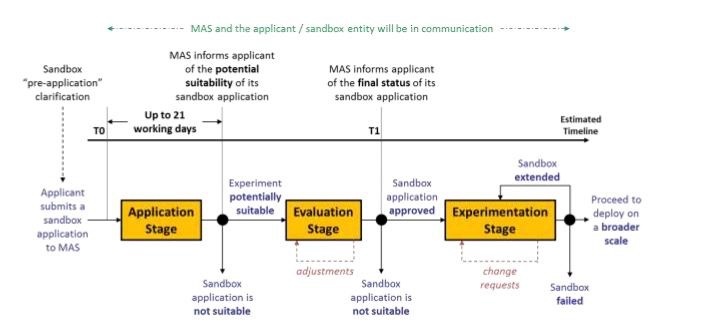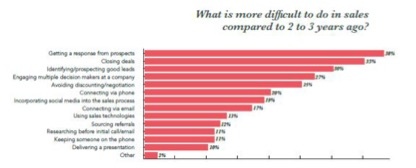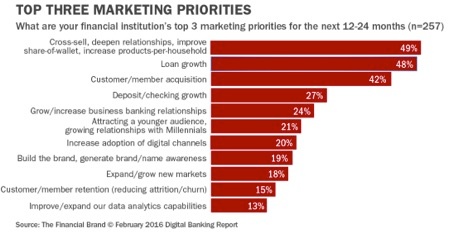How can foreign financial institutions grab a slice of the booming Singapore market?

Conditions are ripe for foreign financial institutions to adopt the right growth mindset for new market entry into the Singapore market. First, the Singapore economy had grown faster than expected at 2.7% in the first quarter and further growth is expected in the years ahead. Secondly, Singapore has started to liberalize its financial sector in a series of move.
It started with the regulatory sandbox by the MAS where FinTech companies are allowed to take more risk in November 2016. This is followed by the proposed exemption of track record requirements for FIs who operates in the digital advisory space (also known as robo-advisory) in early June 2017. Finally, in late June 2017, Singapore banks are allowed to invest into digital platforms that match buyers and sellers.
 Source: Ministry of Trade and Industry
Source: Ministry of Trade and Industry
Out of the $410 billion market size of Singapore, the finance and industry sector plays a prominent role. With growth expected to soar in 2017, we are seeing local players such as Bank of Singapore who are keen to expand their footprint. If you are serious about entering the Singapore market, do refer to our earlier article on cultural awareness and hiring practices in Singapore.
Two financial sectors to explore
The financial industry has many facets which makes it difficult to identify the exact area where there is a market gap for foreign players to enter. For instance, you would not want to come in to compete in the retail banking and mortgage markets against the well funded local giants such as DBS, UOB, OCBC and established foreign banks such as Maybank, CIMB, Citibank, HSBC and Standard Chartered.
1. Wealth Management with Robo-Advisory
The wealth management market is based mostly on personal relationships between the service provider and the high net worth individuals. If you are from Australia and you know of your close clients who have expanded their base of operations to Singapore and are doing well, you can always follow suit and set up base here. The standard regulation for fund management can be found here.
Assuming a 1% wealth management fee on assets under management (AUM), which excludes performance fee of 10% to 20%, you will need to attract just $25 million AUM to get started in Singapore. Indeed, the three local banks in Singapore had earned a combined $1.5 billion in fees in 2015 alone with strong growth over the past 5 years.
 Source: Straits Times
Source: Straits Times
This continued on to year 2016 where wealth management fees accounted for between 15% to 20% of income for DBS and UOB and 30% for OCBC. If you were to approach the wealth management business with a robo-advisory approach, MAS is looking to relax the entry criteria in July 2017 to encourage growth in the industry.
This robo-advisory is relatively young in Singapore and there is no relevant of established players such as Betterment and Wealthfront in Singapore. So the field is left wide open for any player to provide a truly innovative solution to the industry. Being a low cost wealth management solution, the player can also provide financial advice to the under-served mass market in Singapore.
2. FinTech
The FinTech sector in Singapore is mainly focused on the crowdfunding area for loans, equity, products and even real estate. Kickstarter is one of the prominent entry from the United States in September 2016 when they saw that Singaporeans spent US$30 million to back projects on their websites and 110 Kickstarter projects started in Singapore.
Existing players include Funding Societies, Moolah Sense and Capital Match in the loan crowdfunding space, Co-Assets and Investacrowd in the real estate crowdfunding space, FundedHere and Crowd-Genie in the equity crowdfunding space.

Source: Monetary Authority of Singapore
The local regulator understands that FinTech is a fledging industry where there is no defined standards as new technology and players are emerging everyday to change the industry landscape. In other words, when you bring a distinctive FinTech service to the market that is different from the current service, you can apply for the Sandbox.
As long as your service is truly beneficial to the public, you don’t have to worry about getting your product to the market. Of course, the FinTech industry is not limited to crowdfunding alone, it includes other segment such as insuretec, payments, blockchain, regtech and so on. In any of these segment, there is tremendous opportunity for the agile player to make a big impact on the scene.
Issues you might face in getting the message across...
Whether you are looking to make your mark in the lucrative wealth management business or the high potential FinTech arena, you will need to get the message across to your potential clients that you have an awesome product that will either solve their pain or grow their business for them. This is especially the case where you are a new entrant into the market.

Source: HubSpot
According to a HubSpot survey, one of the top difficulties that you will face is to get a response from prospect followed by closing the deal. The harsh reality is that prospects are inundated with a variety of calls from prospective solution providers. What is it that you have that will set you apart from your competitors?
Following that, we have the issue of trust if you are a new entrant. You will have to demonstrate that you have the appropriate local knowledge of how business is conducted and the issues faced by the locals before you will be able to close the deal.
 Source: The Financial Brand
Source: The Financial Brand
If you are financial institution that is trying to break into the Singapore market, outside of the traditional banking industry, you are likely to prioritize the cross selling, customer acquisition and brand awareness as seen in the survey above.
The Solution
All these require the right messaging in terms of your content strategy, distribution, social media strategy, sales strategy, management, mobile presence and other touch points on which your brand is being introduced to your clients. It has to be customized to your actual situation as you enter the Singapore market, regardless of whether you are from Europe, United States or Australia.
There are subtle differences in culture, working environment, assumptions which needs to be examined by experts who have decades of marketing background. We would be able to provide a tailored free business growth assessment using our local knowledge which will save you time and effort to navigate the business landscape in Singapore.
